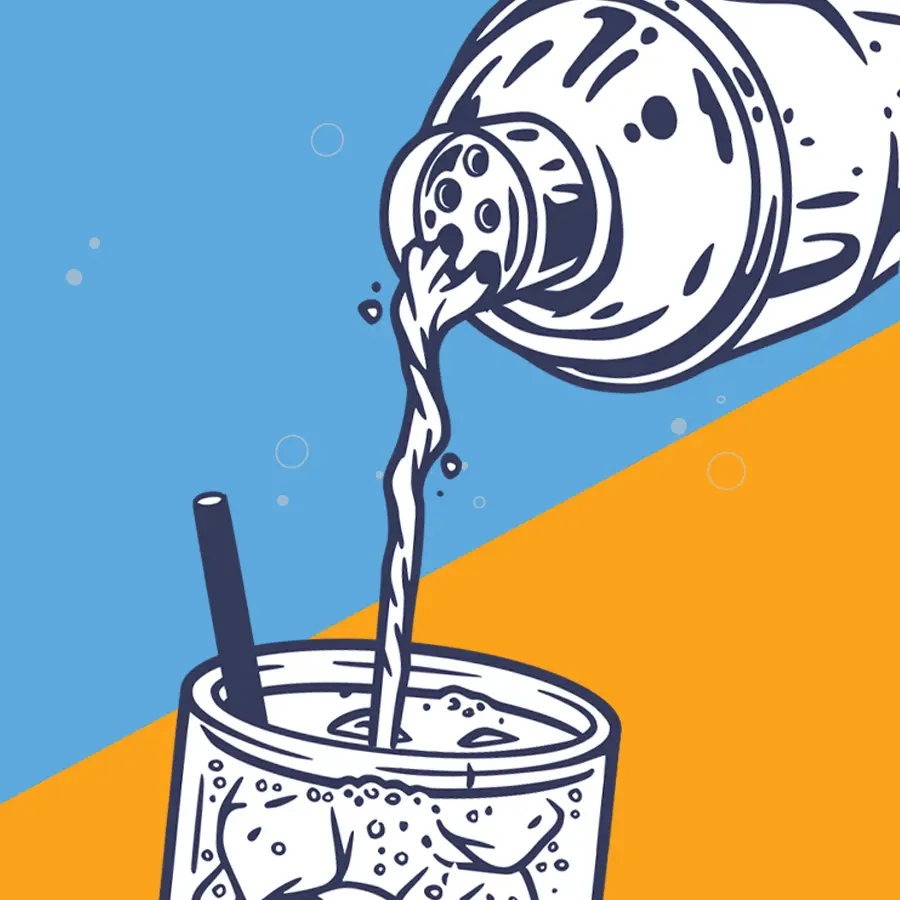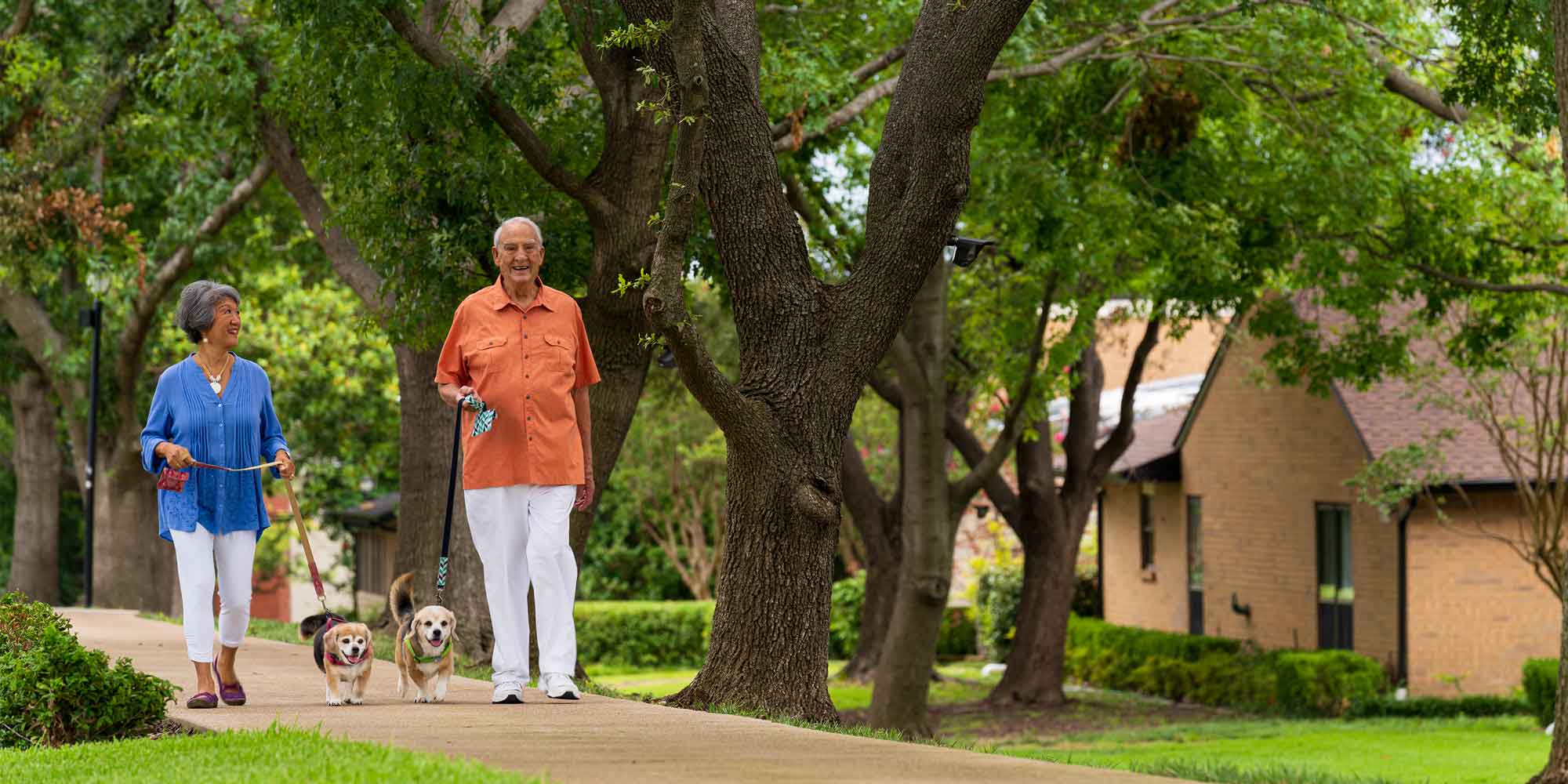The health and wellness benefits of blending elements of nature and green space into everyday life are significant. That’s why more seniors are on the move and choosing walkable neighborhoods found in independent living communities over a concrete jungle high-rise life.
What makes a neighborhood walkable?
Walkable neighborhoods in senior living communities have several characteristics in common. They have a “center” and plenty of places for residents to gather and explore. Homes are close enough that residents only have to take a few steps outside their door before they’re in green space.
Connectivity of paths, roads and walking spaces is another feature of walkable neighborhoods. Sidewalks in senior living neighborhoods are easily accessible, wide enough to navigate, well maintained and feature quality pavement material.
Unlike high-rises, senior living communities also offer aesthetically pleasing details such as tree-lined streets, flowers and plants, community food gardens, healing gardens, water features and winding paths.
Resident safety also is essential throughout independent living communities, with a special focus on pedestrian crossings, smaller block sizes, reduced traffic speed, limited traffic flow and appropriate signage.
Step out: Benefits of walkable neighborhoods
Residing in a walkable neighborhood comes with a variety of benefits to help boost seniors’ quality of life – from reducing carbon footprint to enhancing a sense of community.
Provides myriad health benefits
Unlike their high-rise counterparts, walkable neighborhoods make it easier for seniors to incorporate more physical activity into their daily lives. The simple act of walking outside in green space isn’t only easy – it’s free!
Health benefits include lower blood pressure; reduced body fat decreased rates of diabetes, heart disease and obesity; improved pulmonary and cardiovascular function, and reduced likelihood of hearing loss or cognitive impairment that may be caused by noise pollution.
Increases social interactions
Rather than driving around alone in a car, seniors in walkable neighborhoods can take advantage of daily interactions and mingling with friends and neighbors. Strengthened bonds within a community means more social engagements and events such as walking groups, block parties, barbecues and games.
Helps improve the environment
Walking doesn’t use fossil fuels or create pollution and greenhouse gas emissions, which means not only is it healthier for our lungs, it’s better for the global environment. Walkable neighborhoods allow seniors to take fewer trips in the car, which helps reduce noise and air pollution, traffic congestion and stormwater runoff. These green independent living neighborhoods also help promote safety because their streets belong to residents – not cars.
Promotes good mental health
Spending time walking outside surrounded by green space also can have restorative effects for seniors. Diverse landscapes, green spaces, and dedicated walking paths help stimulate interests and encourage seniors to walk more and for longer periods of time. In turn, those walks help reduce stress and depression and improve mental health.
Helps save money
Owning cars can be expensive and consume a big portion of a monthly budget. On top of payments and insurance, there are gas and routine maintenance. But living in walkable senior living neighborhoods means you can lower the costs associated with car ownership. Getting around is far more affordable, and it allows you to reduce the number of cars you own. That savings can then translate into more disposable income and opportunities for you to enjoy doing what you love.
7 ways to make the most of foot-friendly senior living neighborhoods
Seniors on the move! When it’s time to step outside, there are several ways for older adults in senior living neighborhoods to spend their time.
- Get your stroll or roll on: Lace up your tennis shoes and take a stroll with a walking group, or hop on a bike and pedal through the safe streets of an independent living neighborhood. Many pet-friendly communities even have fenced-in dog parks where you can let your pooch run free.
- Nurture your spirit: For a soothing change of pace, head outdoors and find a quiet place to meditate, practice stillness or reflect silently.
- Sip and dine al fresco: Bring a blanket and a bagged lunch and enjoy an outdoor picnic. Or pack some wine, cheese, fruit and crusty bread and have a leisurely lunch.
- Use natural resources to create art: It doesn’t matter what your favorite medium is – plein air painting, photography, coloring or sketching. Grab your camera or easel and brushes and explore the colors, textures, patterns and shapes found only in nature.
- Exercise your green thumb: Many senior living communities offer community gardening areas where you can dig in the dirt and grow plants and veggies. Others allow you to stop and smell the roses in fragrant gardens.
- Soak up the sun: Find a place to sit and read a book, magazine or newspaper, listen to music, or tease your brain with a crossword puzzle. But don’t forget your hat and sunscreen!
- Take a walk on the wild side: Grab your binoculars for some birdwatching or to observe wildlife in their natural habitat. At Presbyterian Village North, you can participate in birdwatching and tracking the Purple Martins that nest near the property’s water feature.
Living independently
Independent living starts with an active lifestyle and living in a comfortable home that best suits your needs – whether it’s a garden apartment, custom home or spacious villa. Moving to a senior living community helps strengthen your independence and increase the likelihood of keeping it longer.
Get in step with Presbyterian Village North and join us for a walk through the neighborhood!
The independent living apartments and homes create a friendly and walkable neighborhood on 66 gorgeous wooded acres, with walking paths to some of the finest scenes in nature in North Dallas.


